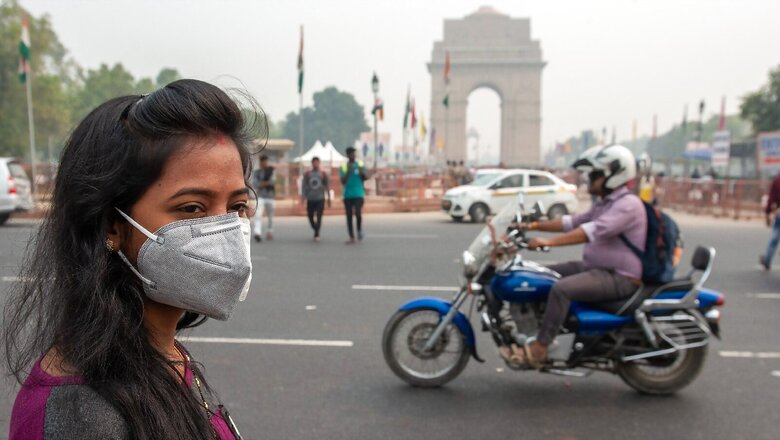
views
Delhi and most of the other non-attainment cities under the National Clean Air Programme, or NCAP, launched exactly three years ago, have shown only a marginal improvement, said a new analysis released on Monday.
Some of the cities have even recorded an increase in particulate matter (PM) levels, it said. Cities are declared non-attainment if they consistently fail to meet the National Ambient Air Quality Standards (NAAQS) over a five-year period.
The Centre’s National Clean Air Programme (NCAP) was implemented across India in 2019 to reduce particulate matter levels in 132 cities by 20-30 per cent in 2024.
The analysis by NCAP Tracker, a joint project by news portal ‘Carbon Copy’ and a Maharashtra-based start-up ‘Respirer Living Sciences’, designed to track India’s progress in achieving the clean air targets, ranked Ghaziabad in Uttar Pradesh as the most polluted city out of the 132 non-attainment cities with highest levels of PM 2.5 and PM 10 (particulate matter that is 10 microns or less in diameter).
Delhi was the second most polluted city in the list of cities with the highest PM 2.5 level and fourth in cities with the highest PM 10 level. Despite the constant focus on the air pollution woes of the capital city, Delhi reduced its PM levels only marginally, the analysis said.
“Based on the Continuous Ambient Air Quality Monitoring System (CAAQMS) data, its PM 2.5 levels dropped from 108 ug/m3 in 2019 to 102 ug/m3 in 2021 and its PM 10 levels reduced from 217 ug/m3 to 207 ug/m3 during the same period,” it said, adding that Delhi’s PM 2.5 level continues to be more than 2.5 times the CPCB’s safe limit of 40 ug/m3 and 20 times the WHO’s safe limit of 5ug/m3.
According to the three-year comparative analysis, Ghaziabad, with an annual PM 2.5 level above 100, remained at the top of the table in the most polluted cities, except in 2020, when Lucknow ranked first with an annual PM 2.5 level of 116.
“Most other cities like Noida, Delhi, Moradabad and Jodhpur saw only a marginal dip in PM 2.5 level and remained in the top 10 polluted non-attainment cities throughout the year. Varanasi, with its drastic dip in PM 2.5 level, went from the fifth rank in 2019 to the 37th in 2021,” it said.
The other cities that have already met its reduction target of at least 20 per cent were Hubli, West Bengal, where PM 2.5 and PM 10 reduced by 42 per cent and 40 per cent respectively and Talcher, Odisha, which saw a PM 2.5 reduction of 20 per cent and PM 10 reduction of 53 per cent.
Ahmedabad recorded a 26 per cent decrease in PM 10 level. On the other hand, Navi Mumbai’s PM 2.5 level increased from 39 ug/m3 to 53 ug/m3 and PM 10 level from 96 ug/m3 to 122 ug/m3 in two years.
With little gains in terms of PM reduction, recent data from the Ministry of Environment shows that the money spent across the states is dismal too.
Under NCAP, ₹ 375.44 crore has been provided to 114 cities during 2018-19 to 2020-2021 and ₹ 290 crore is allocated to 82 cities for the financial year 2021-2022. The programme has an allocation of ₹ 700 crore envisaged for 2021-2026, the analysis said
“However, data presented at the NCAP’s National Apex Committee recently showed that most states have used little of the funds allocated to them,” it said.
Ronak Sutaria, CEO and founder, Respirer Living Sciences, said that the top 10 most polluted cities from 2019 continue to occupy the table in 2021 too.
“This goes to show how hard the problem of reducing air pollution is… The sources in these cities are affecting the entire airshed,” he said.
Giving the credit to rains for bringing down pollution in Delhi, Aarti Khosla, director, Climate Trends, said the governance of air quality issues is not making the required progress.
“The two times Delhi had good air quality in the last six months was due to more than normal rains bringing down pollutants and not much due to the efforts on reducing air pollution,” she said.
Read all the Latest India News here




















Comments
0 comment